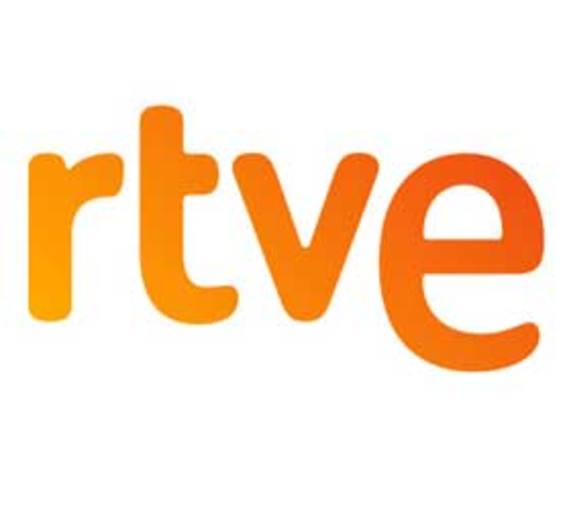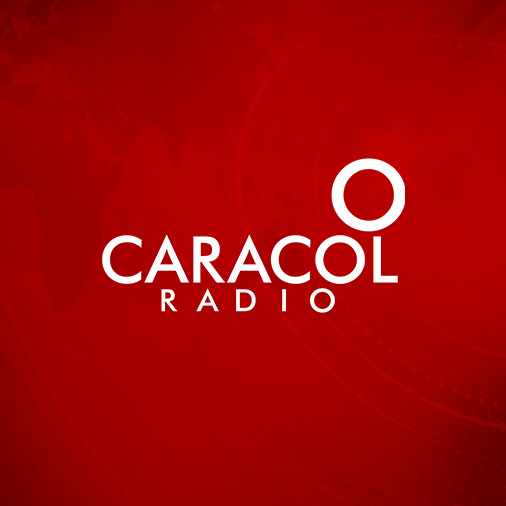
The 8 Best Spanish Talk Radio Stations You Can Access Online
Listening to the radio is almost like eavesdropping on an authentic Spanish conversation.
Except you don’t have to go abroad or invade someone’s privacy to get that immersive experience.
In this post, we’ll look into some of the best sources of Spanish talk radio you can access from wherever you have an internet connection.
These excellent radio programs come from different parts of the world so you can choose one or two based on what kind of regional dialect and accent you want to learn.
Listen to them actively, and you’ll no longer fear those fast Spanish speakers.
Contents
- Sources of Spanish Talk Radio Content
- Tips for learning Spanish with radio online
- Why Listen to Spanish Talk Radio?
- And One More Thing…
Download: This blog post is available as a convenient and portable PDF that you can take anywhere. Click here to get a copy. (Download)
Sources of Spanish Talk Radio Content
1. Radio Nacional de España (Spain)
Spain’s national public service radio had its auspicious beginning in 1937 during the height of the Spanish Civil War. It’s said that the first transmitter for Radio Nacional de España (RNE) was donated by Nazi Germany and was promptly used for nationalist propaganda.
Today, RNE has come a long way and is now composed of six channels including one dedicated to classical music, another to youth-oriented programs and still another broadcasted in the Catalan language.
Because it’s publicly funded, RNE airs no commercials during its programming. Some of its well-known programs are:
This one is hosted by Daniel Galindo and covers the performing arts scene. For two hours every Saturday from midnight to 2:00 A.M. Central European Standard time (GMT+1), we deal with high culture and talk to playwrights, producers and performers about their latest projects. Sometimes the whole cast comes in for a conversation which makes for a delightful and insightful peek into the performing arts.
Made for lovers of science and technology and hosted by Manuel Seara Valero, this program will help you get your fill of both science and Spanish. The program talks about the latest findings in chemistry, physics, biology and astronomy.
The title, translated as “on the shoulders of giants,” comes from a famous line written by Sir Isaac Newton as a homage to the thinkers who went before him. He said: “If I have seen further it is by standing on the shoulders of giants.” As a language learner, you can stand on the shoulders of giants by listening to native speakers who can open your eyes to the secrets of Spanish.
This was a sports-oriented program hosted by Pedro Molina Serrano, the sharp and funny Director of Sports Program for RNE, until September 2018. The program was dedicated to Spanish sports and updated listeners on Spanish athletes as they battled against the world. Even though the show doesn’t air regularly anymore, you can still access old episodes online.
Serrano talks about football (soccer) a lot (and I mean a lot!) and gives incisive pre- and post-game analyses. He can deconstruct a brilliant, complex play and make you appreciate it on a different level. And what do you know, you’ll also be learning Spanish along the way!
2. Cadena SER (Spain)
Cadena SER is Spain’s most listened-to radio network with a regular audience of over four million listeners. It’s also the oldest radio network, created in 1926. In accordance with its slogan, “Escucha con nosotros la vida” (Listen to life with us), Cadena SER programming covers news, entertainment, sports and culture. Some of its mainstays are:
This popular program had its first broadcast in 1972 and has been voiced by legends like Iñaki Gabilondo and Carlos Llamas. Today, Àngels Barceló talks about the news and the most pressing issues of the day (Mon-Fri 8-12 P.M. Central European Standard Time, GMT+1).
And yes, everything is up for debate. Listen to “Hora 25” and you’ll not only have your fair share of Spanish idioms and vocabulary, but you’ll also get a peek into a country’s socio-economic and political affairs.
This show stopped airing in September 2018. Hosted by TV and radio personality Macarena Berlin, it used to air regularly at 1:30 A.M. and was dedicated to night owls who wanted to share and listen to personal stories.
The program centered around callers who related their experiences—some tragic, others funny. After the problem was laid on the table, other callers joined to voice their opinions on the matter and try to help out. You can still access old episodes online, with Macarena Berlin’s soothing voice moderating the whole process, enunciating in clear Spanish great for language learners.
3. Radio Mitre (Argentina)
Based in vibrant Buenos Aires, Radio Mitre has gone full circle. It started off as a private enterprise, became nationalized under the Peron regime and finally became re-privatized again in 1983.
It’s mainly a news network, with news reporting every 30 minutes. The network has received several Martin Fierro awards for its news reporting.
Two of the celebrated commentators for Radio Mitre are Marcelo Longobardi for “Cada Mañana” and Alfredo Leuco for “Le Doy mi Palabra.” The former holds court at 6:00 in the morning Argentina Standard Time (GMT-3) Mondays to Fridays, while the latter spices up the evenings at 5:00 P.M.
The programs center around the reasoned and seasoned opinions of commentators Longobardi and Leuco. They talk about the big issues like politics, law, the economy and the comings and goings of the present administration, giving incisive analyses on Argentinian affairs.
Take a listen to these masters and learn a kind of Spanish that’s both powerful and persuasive. Notice the cadence of their voices and realize that they do mean business.
4. Radio Fórmula (Mexico)
Radio Fórmula was the brainchild of the visionary Rogério Azcárraga Vidaurreta—a member of a wealthy multimedia dynasty.
It started off mainly as a music network with programs like “Vibraciones del Rock.” But in 1987, that changed a bit when Radio Fórmula adopted more of a talk-oriented format. So now, they have shows like the following three:
This is your ticket to entertainment and culture. If you want to know Spanish as well as the latest in shows, theater, movies, showbiz, fundraisers, socials and the most happening places and faces, you’ll want to lend your ears to René Franco.
If a show is titled “El Panda,” you probably can surmise that there will be a lot of antics, witty remarks, one-liners, wall-to-wall jokes and laugh tracks coming your way. “El Panda Show” is hosted by the zany, (but actually very deep), Antonio Zambrano. Call in during the show and you’ll definitely have a good time! The show has developed quite a following and even has its own app (iOS, Android).
“The Hairy Hand” is such an interesting title for a show. It’s too bad this show stopped airing in 2017, but fortunately, you can still listen to old episodes.
“La Mano Peluda” comes from a Latin legend. It’s said that the hairy hand belongs to a man who died during the Inquisition. His body was chopped up and buried in an old Indian cemetery. His hand is said to come back to life and exact revenge on (who do you think?) kids who don’t eat their vegetables. The show was about supernatural experiences and the people who lived through them. Listen and you’ll never get sleepy ever again.
5. Radio Deportes (USA)
Quick question: What do the Lakers, Clippers, Angels and Galaxy have in common?
If you said “L.A.,” then you’ll feel right at home with Radio Deportes. It’s the Spanish radio arm of ESPN and the whole network is dedicated just to sports, 24/7.
Shows include “Super Gol” hosted by Halim and Troy airing Mondays to Fridays at 4:00 P.M. Pacific Standard Time (GMT-8). They talk about football, basketball, boxing and practically anything to do with athletes beating their peers at something.
If you’re looking for some passionate men, listen to Radio Deportes. You’ll hear them irreverently argue about stats and scores like their lives depended on it. It’ll make for an eye-opening Spanish lesson.
6. Radio Caracol (Colombia)
Radio Caracol (Snail Radio) is a radio station from Colombia that was founded in 1945. Despite its name, Radio Caracol is anything but slow: It’s one of the most well-known radio stations in Colombia.
In addition to local Colombian news, the station tackles international news stories like politics, entertainment and world events. In fact, it’s been crucial in breaking high-profile scandals in Colombia, and in covering all aspects of the Colombian Conflict from the 1960s to today.
Along with its distinct political edge, Radio Caracol has many shows that are suitable for the average Spanish learner.
“The Pulse of Soccer” is a pretty on-the-nose description of the culture of soccer in Colombia and in Latin America. If you love learning Spanish and you love soccer, this show will be an invaluable resource for you. It airs Monday to Friday from 1:00 to 2:00 A.M. Colombia Standard Time (GMT-5), and it covers all things related to the beloved sport: the Colombian league, the Colombian national team and the world of soccer at large.
If you want a show that’s more on the serious side without wading into potentially controversial political topics, “Planeta Caracol” (Snail Planet) is the show for you. It focuses on the environment, both locally in Colombia and around the world, and provides the latest on climate change, activism and environmental protection. It airs every Saturday morning at 6:00 A.M. Colombia Standard Time (GMT-5).
7. Radio Nacional del Perú (Peru)
The “National Radio of Peru” is just that: It’s the national radio carrier for the country of Peru. This channel was launched in 1937, and it covers a variety of Peruvian and international news and commentary as well as more specific, topic-centric shows.
Aside from its shows in Spanish, there are also a number of radio shows in some of Peru’s indigenous languages such as Aymara and Quechuan.
Some of its popular Spanish programs are particularly useful for Spanish learners.
“Techno Nation” is for technology lovers. It covers the latest innovations in technology from self-driving cars to digital currency, and it even uncovers some of the downsides and drawbacks to our heavily digital lives. The show is hosted by Mirta Ibáñez, and it airs every Saturday at 11:00 A.M. Peru Standard Time (GMT-5).
“Between Books” is for all the Spanish bookworms out there. It focuses on books in Spanish and other languages, interviews with authors and other literary trends. In fact, this show is so well-rounded that it can be used as a springboard for Spanish learners who want to start reading books in Spanish but don’t know where to begin. Writer and professor César Bedón hosts this talk show every Saturday from 8:00 to 9:00 P.M. Peru Standard Time (GMT-5).
“Without Barriers” is quite a unique show for Peru and the rest of the Spanish-speaking world. Its focus is on people with disabilities, their successes and challenges. It also covers topics on accessibility and how to create an inclusive society. Enrique Bustos and Vilma Andrade deliver this eye-opening and information program every Sunday from 8:00 to 8:30 A.M. Peru Standard Time (GMT-5).
8. CNN Español (USA)
You probably know CNN as the English-language television channel that’s employed some of America’s best journalists, but did you know that there’s also a sister CNN channel that’s entirely in Spanish?
“CNN Spanish” covers all the hard-hitting American and world news as well as commentary from prominent political pundits and experts. Like its English equivalent, this station is a talk show covering news and developments 24/7.
For the best use of the channel, I suggest listening to it in tandem with the English version of CNN. This way, you can better understand the news in both languages and watch your Spanish comprehension soar.
Tips for learning Spanish with radio online
Play around until you find a few stations you like
Not all radio stations are created equal and not all will appeal to your tastes. If you’re going to strike up a regular listening habit, you’ll want something that isn’t going to make you want to chuck your laptop out the window. Some stations focus on talk, some play chart hits and still others have a local flavor to their music (Reggaeton, anyone?). Do a bit of experimenting to find the stations that work for you.
Tip: Since there are so many stations online, take a few notes when you listen to one. For example, do you like the music? Is there enough talk? What time of day did you listen? That way, you can easily compare.
Listen every day
Learning by repetition requires repetition! Try to find a regular slot in your day that can become radio time, whether it’s when you’re cooking dinner, on your drive to work, while you’re studying (double challenge!) or in the background at work (colleagues permitting).
Tip: Set a calendar reminder to prompt you to start streaming. After a while, it’ll become habit.
Find regular programs you can tune into
Just as you’ll find variety across different stations, you’ll also find the tone changes as radio programs progress through the day. Breakfast shows tend to be upbeat, while you might find more humor and comedy after the kids have gone to bed. Certain days are sports days in some countries. When you’re making notes of which stations you like, also pay attention to which programs you like. Some of them can even be listened to after they’ve been broadcast live.
Don’t just listen (write and translate, too)
So the concept of osmosis is a nice idea, but to really boost your learning, you’ll want to get a bit more interactive.
Here’s a good newbie exercise: Take a blank page. On the left, write down any words you think you hear. Spell them phonetically if you have to. Once you’ve got a full page, pause the show (many online Spanish radio stations will let you do this). Then grab your dictionary or head over to Google Translate to check your words. Now, go back and re-listen. Did you hear right? Can you follow the conversation better?
You can do the same with a song you like. You can use a simple Google search to find plenty of full English translations for popular Spanish songs.
Find radio clips on the website to playback
Sometimes there will be ads, or even just parts of a show available for you to play however many times you like. The ability to pause, rewind and replay is a very powerful function when you’re trying to learn new words. Do this over and over until you fully understand a small paragraph. It’s a real confidence booster to be able to listen to an entire chunk of a radio program and follow every word.
Why Listen to Spanish Talk Radio?
It’s accessible online
Ironically, you don’t even have to own a radio to listen to the radio. In this day and age, you have access to radio programs and podcasts from all over the world through the Internet.
Thanks to modern technology, you can listen in on Spain, Mexico or Venezuela from the comfort of your home. While you’re scrolling through Instagram, you can listen to a radio broadcast that a Spanish teenager living in Barcelona is also listening to.
It presents authentic usage of the language
With Spanish talk radio, you can listen to the same content that native Spanish speakers are listening to. It can hardly be more authentic than that.
Unlike the audio you may listen to in a Spanish course, the speakers on Spanish talk radio talk fast. While it might seem overwhelming at first, you’re going to have to expose yourself to this fast speech eventually if you want to improve your listening comprehension and understand native speakers.
Another way to expose yourself to authentic Spanish speech is with an immersive learning program like FluentU, which uses short video clips from real media to teach the language.
FluentU takes authentic videos—like music videos, movie trailers, news and inspiring talks—and turns them into personalized language learning lessons.
You can try FluentU for free for 2 weeks. Check out the website or download the iOS app or Android app.
P.S. Click here to take advantage of our current sale! (Expires at the end of this month.)

It allows you to practice multiple language skills
By listening to Spanish radio, you get to practice many aspects of the language. First, you can get better at working out the meanings of sentences through their context and the words you already know.
Second, you get to further build your vocabulary. Radio programs dealing with different topics like politics, sports and entertainment have their own jargon and expressions that you can incorporate to add depth to your communication.
Third, your ears get a feel for the natural rhyme and rhythm of Spanish, its inflections, pauses and tones. If you want to sound like a native speaker, you’ve got to listen to the natural rising and falling of speed, volume and emphasis of the language. And you can only acquire that by listening to how native speakers instinctively enunciate their thoughts.
Now you have eight sources of some of the best Spanish audio content you can find. Invest your time to listen to them regularly.
You’ll not only learn about politics, economics, showbiz and sports, but you’ll also learn a great deal about Spanish!
Download: This blog post is available as a convenient and portable PDF that you can take anywhere. Click here to get a copy. (Download)
And One More Thing…
If you've made it this far that means you probably enjoy learning Spanish with engaging material and will then love FluentU.
Other sites use scripted content. FluentU uses a natural approach that helps you ease into the Spanish language and culture over time. You’ll learn Spanish as it’s actually spoken by real people.
FluentU has a wide variety of videos, as you can see here:

FluentU brings native videos within reach with interactive transcripts. You can tap on any word to look it up instantly. Every definition has examples that have been written to help you understand how the word is used. If you see an interesting word you don’t know, you can add it to a vocab list.

Review a complete interactive transcript under the Dialogue tab, and find words and phrases listed under Vocab.

Learn all the vocabulary in any video with FluentU’s robust learning engine. Swipe left or right to see more examples of the word you’re on.

The best part is that FluentU keeps track of the vocabulary that you’re learning, and gives you extra practice with difficult words. It'll even remind you when it’s time to review what you’ve learned. Every learner has a truly personalized experience, even if they’re learning with the same video.
Start using the FluentU website on your computer or tablet or, better yet, download the FluentU app from the iTunes or Google Play store. Click here to take advantage of our current sale! (Expires at the end of this month.)
















